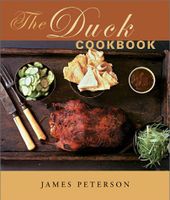Advertisement
How to Save the Rendered Fat
Appears in
Published 2003
There’s no denying that duck fat is not only very tasty, it’s very useful in the kitchen for browning meats or seafood, for sautéing potatoes and other vegetables, and perhaps best of all, for making omelets. If you’re careful, you can save the fat that duck breasts render as they sauté. First you must sauté the breasts in a heavy-bottomed pan just large enough to hold them in a single layer. If the pan is too big, the fat will spread into the empty areas and burn. You can judge if you burned the fat by its smell, which should be like duck, not burned fat. (Again, think of bacon, which behaves in much the same way: You can smell it when bacon fat has burned even if the bacon slices themselves have not.) You can save some of the fat by pouring it out of the sauté pan after about 5 minutes and discarding the fat that’s released after that. After just 5 minutes, the fat won’t have had time to burn.


